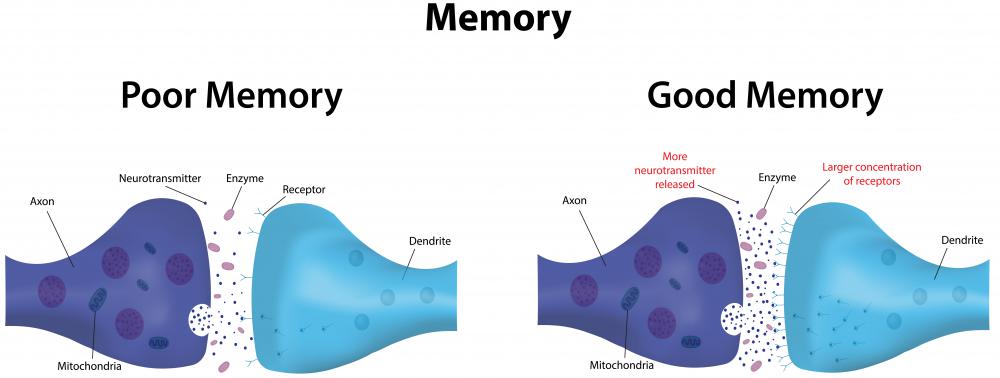At WiseGEEK, we're committed to delivering accurate, trustworthy information. Our expert-authored content is rigorously fact-checked and sourced from credible authorities. Discover how we uphold the highest standards in providing you with reliable knowledge.
What are Synaptic Vesicles?
Synaptic vesicles are structures found in the human body responsible for storing neurotransmitters. Neurotransmitters are basically chemicals designed to carry signals from neurons to other cells in the body. This is done through synapses, or junctions, which provides the passageway for the signals. These synaptic vesicles are also known as neurotransmitter vesicles.
A vesicle is often described as a bubble made of liquid sitting inside of a different liquid. To be more precise, it is a small sac surrounded by a membrane whose function is to store or carry other substances. In the case of synaptic vesicles, these substances are the chemicals known as neurotransmitters.

The thin membrane of synaptic vesicles is called a lipid bilayer. This membrane is comprised of two separate lipid molecules. Nearly every living organism contains cell membranes which are made of this lipid bilayer. This membrane is responsible for ensuring that molecules such as proteins and ions remain in their proper place.
Inserted into each neurotransmitter are transport proteins. These proteins are specific to the individual type of neurotransmitter. The function of these proteins is to assist a substance or substances in crossing a membrane.

Synaptic vesicles are sometimes destroyed by substances known as neurotoxins. A neurotoxin is basically a poison that affects nerve cells, also referred to as neurons. Botulinum toxins and tetanus toxins are among those neurotoxins known to destroy synaptic vesicles.
Abnormalities in the synaptic vesicles can also occur, as is the case in a medical condition known as familial infantile myasthenia gravis. This disease is classified as an autosomal dominant disorder. This means that the disease is inherited, and the defective gene can come from only one parent. Other types of genetic diseases require that both parents carry the defective gene.

In familial infantile myasthenia gravis, the synaptic vesicles are not properly developed. Infants experience such symptoms as apnea or other breathing difficulties as well as fatigue and weakness. Difficulties with feeding is also common with this disorder. Ophthalmoparesis, or paralysis of the eye muscles, is another common characteristic in children born with familial infantile myasthenia gravis. Very often, the symptoms of this disorder begin to improve as the child gets older.

Treatment of familial infantile myasthenia gravis consists of the use of immunosuppressant drugs as well as cholinesterase inhibitors. If this approach is not successful, surgery sometimes becomes necessary. This procedure generally requires the removal of the thymus gland. The prognosis is generally favorable with many patients achieving a normal life expectancy.
AS FEATURED ON:
AS FEATURED ON:














Discuss this Article
Post your comments